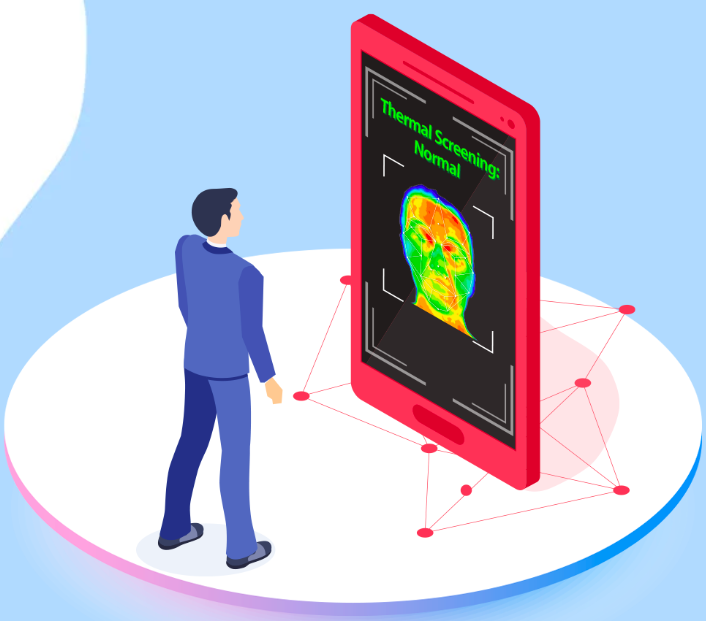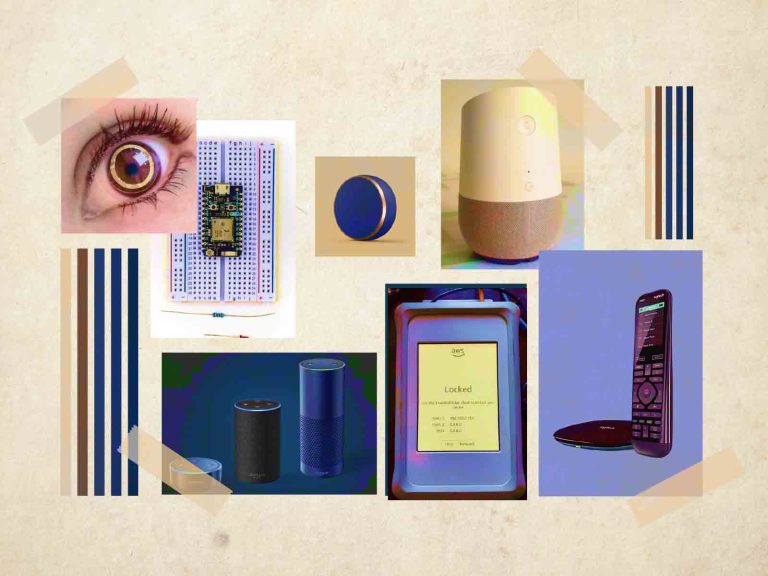With many places gradually emerging out of lockdowns, the idea of communal existence amid Covid-19 is being revisited. Despite the initial resistance to curbs on freedom, people have largely been respectful of social distancing guidelines from fear of contracting the disease or getting other people infected.
With studies still ambiguous about how long the novel coronavirus can survive on surfaces, a widely accepted number stands anywhere between 2 hours to 9 days, depending on the viral strain and the surface it has come in contact with. Sanitising one’s hands after touching public surfaces should help mitigate the potential of exposure. But with office workers reportedly expected to touch their faces about 15 times every hour, this approach may be ineffective.
This has triggered public places, including offices, hospitals and stores, to embrace measures to minimise frequent touching of surfaces. Be it using AI-powered facial recognition systems to automatically open doors at workplaces, or employing IoT to enable connected lifts or smart appliances, technology can play a greater role in helping people transition into the new normal.
Here are some ways in which public places — particularly offices — can use technology to reduce the spread of infections by hand-to-face contact:
AI-Powered Contactless Access System
The use of facial recognition technologies to monitor social distancing between colleagues is already being explored by some companies, including Amazon. With several startups offering solutions tailored to specific customer needs, companies should augment this with the use of thermal screening at entrances to enable automatic opening and closing of doors for healthy employees only.
Software company Ramco Systems has built a contactless access system that bundles both facial recognition as well as thermal screening. Equipped with temperature scanners and IoT-based door sensor tech, its system recognises and registers employees’ faces, matches it with the database, checks the temperature and allows (or denies) entry — all in less than three seconds.
Facial recognition technology driven by AI can also help employees change critical user behaviour. A note from the World Economic Forum shed light on a unique app that uses the tech to keep people from touching their faces. Named donottouchyourface.com, it enables companies to train a machine learning algorithm — specifically Tensorflow.js — with their webcam. With this, it will be able to detect when employees are touching their faces and alert them accordingly.
Tech intervention in this single most important and critical area will greatly help reduce the risk of exposure to the entire organisation. With many workplaces still reliant on access cards and thumb-based biometric entry-exit systems, embracing AI and IoT sensor-enabled sliding doors will help companies adapt to a new normal where Covid-19 may become a part of life.
Connected Elevator
The use of interconnected sensors can help offices reduce the need for employees to touch common surfaces. While it is easier to manage social distancing in elevators by limiting capacity, most — if not all — have buttons to indicate different floors in the building. While encouraging the use of stairs may be an obvious choice at some workplaces, people working in high-rises cannot use that option.
Advances in IoT have enabled elevators to allow people in apartments and office buildings to use apps to indicate which floor they want to travel to.
For instance, Schindler Elevator Corporation’s MyPort app activates an elevator for a user, and using machine learning, can reportedly even predict what time of the day they need the service and what floors they usually go to. What is more, since the system grants restricted access to the lift, it also eliminates the need for security personnel outside.
Another example is Hyundai Elevator. According to the company, it offers a range of services to promote hygienic practices, including a touch-less button that can be activated without the need to press.
Voice Commands To Activate Appliances
Washing hands has been projected as the best way to curb the spread of coronavirus, but can be a poor defence if the faucet itself is contaminated. And this applies to all ‘high-touch’ surfaces, including switches, microwaves, water dispensers, coffee machines, etc.
IoT can help eliminate the need to touch these surfaces. These devices and appliances can be controlled with vocal commands with the help of voice assistants like Google Assistant, or even through an employees’ smartphone.
One example is the smart faucet by ‘U by Moen’. Using voice assistants, or even gestures like the wave of a hand, users can run water and even dictate the exact temperature it should reach. There are numerous other examples that offer a range of use cases, including scheduling on and off times for light switches and appliances like air conditioners, etc. using a centralised cloud accessible dashboard.
Smart Lock & Door Knobs
The door knob is reportedly dirtier than even a toilet seat, claims this report. While it may be difficult to measure how dirty a door handle could get, common sense dictates that it would be a priority area for a sanitation team. This has triggered innovative handles for opening doors without touching them.
Purleve has introduced several models of door handles which can be retrofitted in just 10 minutes. Using proprietary ‘automatic sleeve dispenser technology’ (demonstrated in the video below), it automatically advances a fresh antibacterial sleeve over the handle each time it is used.
Another example is Kwikset, which has launched a series of door hardware that incorporates its ‘Microban technology’. As per the company, this solution adds an additional layer of protection against the growth of germs to reduce the risk of infection. While the company has not advocated its use for 100% protection against coronavirus, its special type of coating can perhaps help mitigate the growth of germs in high-touch surfaces like door knobs.
Outlook
The Covid-19 pandemic has made even the most mundane and everyday situation seem like a high-stakes gamble. Merely, touching a wrong surface could mean the difference between you getting infected by a deadly and highly contagious virus or not.
While some workplaces are employing AI-driven social distancing measures as a defence, others are using drones and robots to disinfect surfaces in preparation for the resumption of work. In addition to the methods mentioned above, experts agree that enabling contactless functions wherever possible may be the only way to go, until a better solution prevails.









































